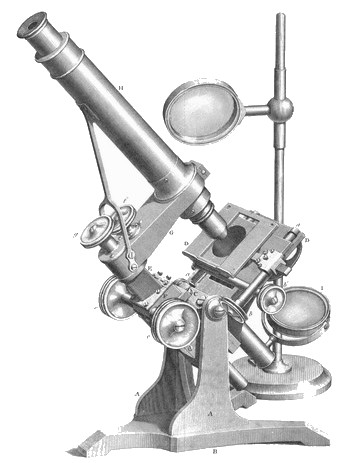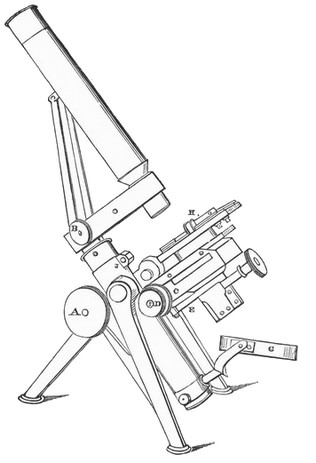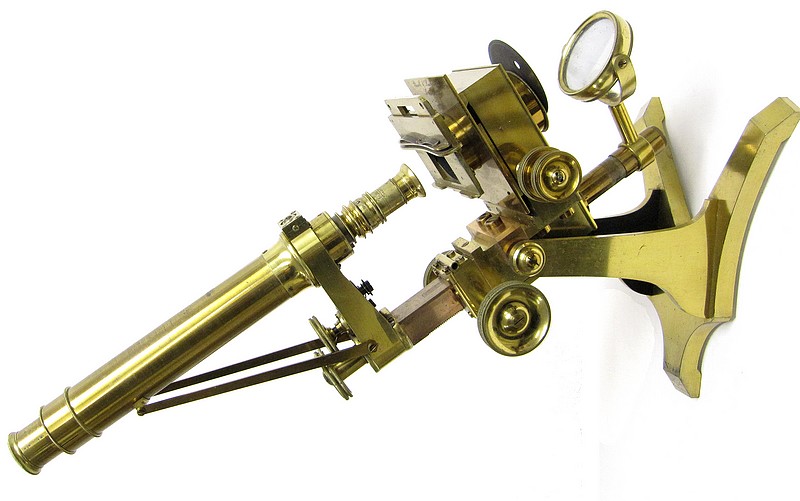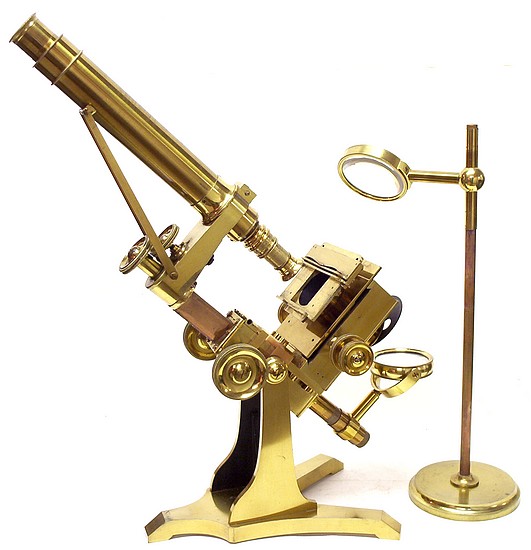
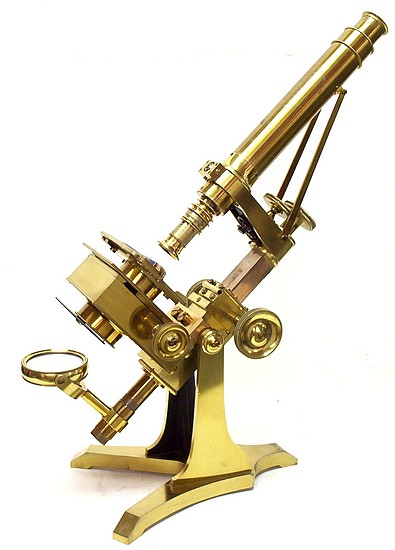
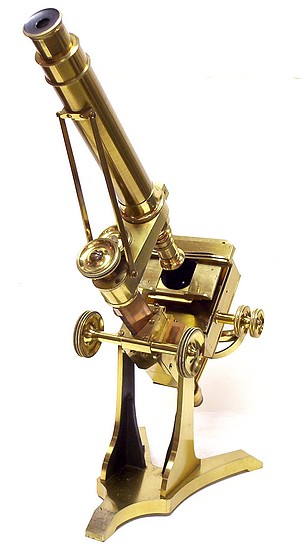
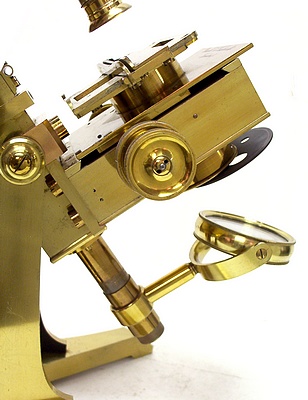
It is of interest to compare the stage and its mounting on this microscope with that on Ross No. 84, which belonged to John Quekett. Note that in order to accommodate the P&L stage, the position of the mirror bar and its mounting had to be modified .
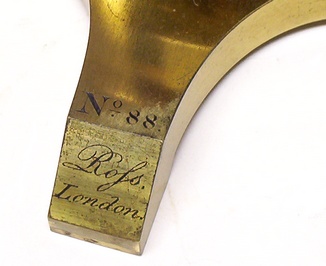

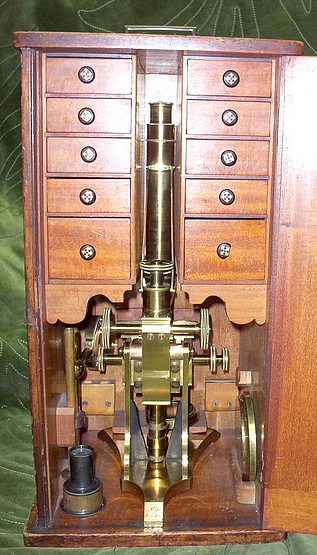
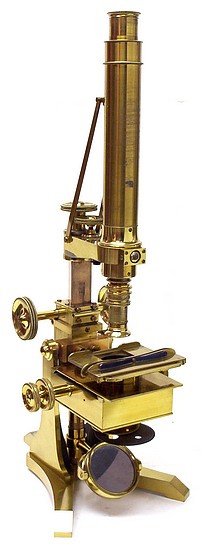
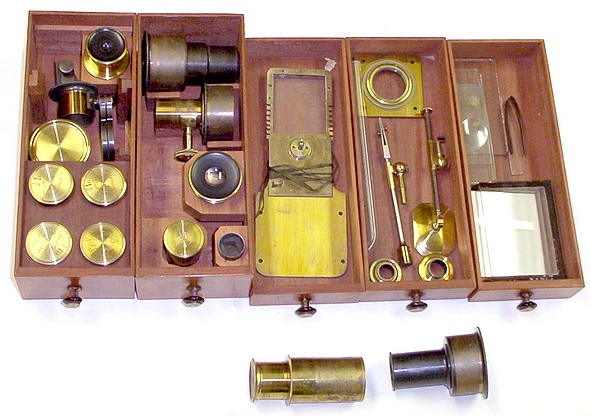
There are four objectives with canisters marked 1, 1/2, 1/4, and 1/8, the latter three with correction collar. Also, among the accessories are three eyepieces, Wollaston a camera lucida, a Lieberkuhn reflector in a brass canister that fits the 1-inch objective, a dark field condenser, a sub-stage aperture wheel, a focusing adapter that allows an objective to be used as a condenser, a sub-stage polarizer, an analyzer that mounts above the objective, a glass trough for live specimens, a large frog plate, a stage forceps, a stage mounted side reflector, adapters to change the sub-stage mounting, an assortment of prepared slides, and a free standing bulls-eye condenser.
This microscope is unique in that it bears the signatures of two of the premier English manufacturers of the Victorian era, Andrew Ross and Powell & Lealand. The microscope incorporates design features found in microscopes made by both firms. In 1843, Andrew Ross published a description of his new microscope design (The London Physiological Journal, 1843). An illustration of this microscope from John Quekett's A Practical Treatise on the Use of the Microscope, 1848 is reproduced on the right. The microscope incorporated a bar-limb construction where the tube was supported by a box-like limb housing a long-lever fine adjustment mechanism designed to move the nosepiece. The microscope is supported on a Y shaped base having two flat uprights terminating at the pivot point, above which is the coarse adjustment consisting of a triangular shaft with rack that slides in a brass block. Movement is by a double-knobbed pinion. This design became quite famous and was used by Ross firm, with some modifications, for over 30 years. Numerous other manufacturers both in England and America based some of their own products on this design. The microscope presented here is an example from the first or second year of production and is signed on the base Ross, London, No. 88.
In the same year and in the same journal, Powell & Lealand published a description of their new microscope. The illustration on the right is extracted from Quekett's book. This instrument also utilized a bar-limb housing for the fine focus mechanism. In this case, the microscope was supported by a substantial tripod base. This microscope served as the basis for all future products from this manufacturer, the production of which lasted into the next century. Of particular interest, is the mechanical stage used on this microscope, which is of the Turrell type and is very similar to the stage found on the microscope presented here which has the signature Powell & Lealand, London. The two support struts attached to the tube are also reminiscent of those found on Powell & Lealand microscopes of this vintage. Ross microscopes No 84 and No. 86, the latter located in the Whipple collection (see: The Whipple Museum of the History of Science, Catalogue 7, Microscopes, cat. No. 203), do not have these struts and each has the Ross mechanical stage, but are otherwise similar to the microscope presented here.
